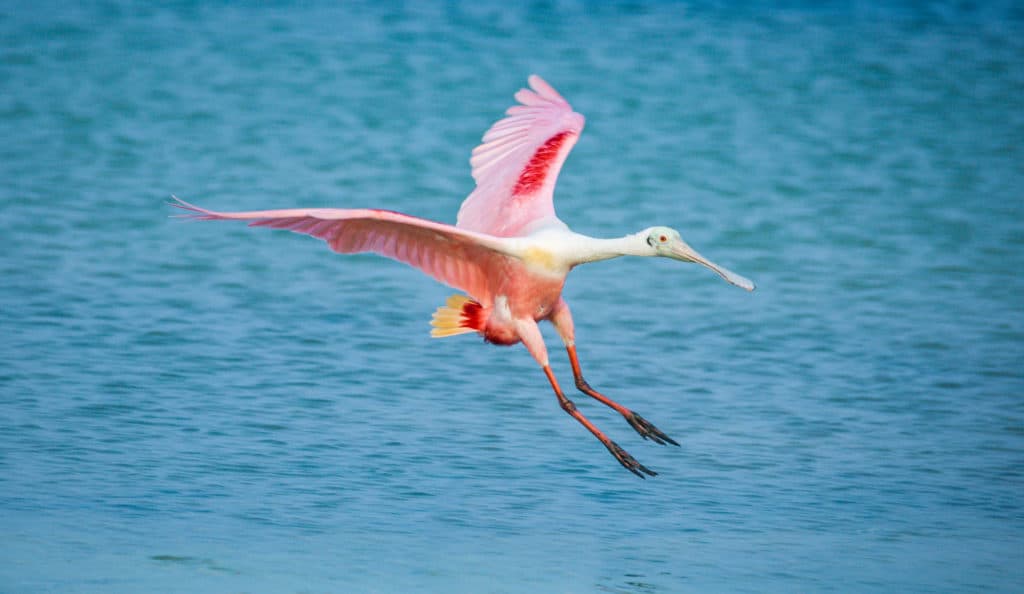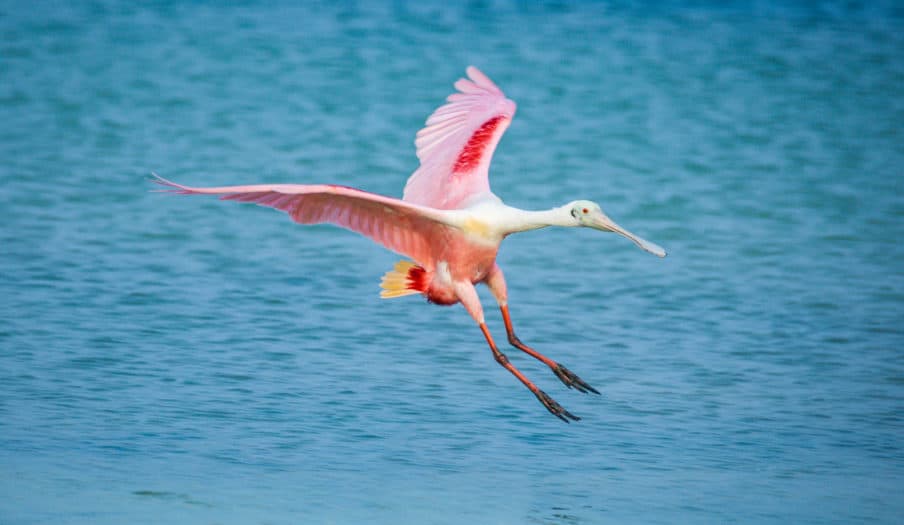
Costa Rica is home to a diverse array of wetlands, including mangrove swamps, freshwater marshes, and seasonal floodplains. These wetlands provide important habitat for a wide variety of plant and animal species, and also play a critical role in protecting the country’s coastline from erosion and storm surges.
The mangrove swamps, in particular, are home to many species of fish, crustaceans, and birds, and also serve as important nursery areas for many commercially important fish species.
Additionally, wetlands in Costa Rica also play a crucial role in water management, as they act as natural filters, removing pollutants and trapping sediment before it can reach rivers and lakes.
There are 5 types of Wetlands in Costa Rica
Mangrove Swamps
Mangrove swamps are a type of wetland found along the coast of Costa Rica. They are characterized by their dense thickets of mangrove trees, which provide important habitat for many species of fish, crustaceans, and birds. The mangroves’ roots, which are submerged in saltwater, help to protect the coastline from erosion and storm surges.
The mangrove swamps are also an important nursery area for many commercially important fish species. In addition to their ecological significance, mangrove swamps also provide important economic benefits to local communities through activities such as aquaculture, tourism, and carbon sequestration. However, mangrove swamps in Costa Rica are facing many challenges such as urbanization, pollution, and over-harvesting of their resources.
Despite their importance, many mangrove swamps have been degraded or destroyed in recent years, highlighting the need for conservation efforts to protect and restore these vital ecosystems.
Freshwater Marshes
Freshwater marshes are a type of wetland found in Costa Rica, typically in low-lying areas. They are characterized by their abundance of marsh plants such as cattails and reeds, and also by the presence of standing or slow-moving water.
These wetlands provide important habitat for many species of waterfowl, such as herons, egrets, and ibises, as well as other aquatic animals like fish, amphibians, and reptiles. They also play an important role in water management by acting as natural filters, removing pollutants and trapping sediment before it can reach rivers and lakes.
Additionally, they help to protect the coast from erosion and storm surges. Freshwater marshes also provide important ecosystem services, such as carbon sequestration, nutrient cycling and soil formation.
However, many of these wetlands in Costa Rica have been drained, filled or converted for agriculture, urban development and other human activities, thus threatening the survival of many species that depend on them and the ecosystem services they provide.
Conservation efforts are needed to protect and restore these vital ecosystems.
Seasonal Floodplains
Seasonal floodplains are a type of wetland found in Costa Rica in areas that experience seasonal flooding. They are characterized by their diverse array of plant and animal life, which adapts to the fluctuations of water level throughout the year.
These wetlands are important breeding and feeding areas for many species of migratory birds, and also provide habitat for other wildlife such as reptiles, amphibians, and mammals.
They also play an important role in water management by acting as natural sponges, absorbing and storing water during the rainy season and releasing it gradually during the dry season, helping to maintain a steady water flow in rivers and streams. Seasonal floodplains also act as natural filters, removing pollutants and trapping sediment before it can reach rivers and lakes.
However, many of these wetlands in Costa Rica have been drained and converted for agriculture, urban development and other human activities, thus threatening the survival of many species that depend on them and the ecosystem services they provide. Conservation efforts are needed to protect and restore these vital ecosystems.
Peatlands
Peatlands are a type of wetland found in Costa Rica that are characterized by the accumulation of dead plant material, typically moss, that has not fully decomposed due to acidic and anaerobic conditions. These wetlands are unique ecosystems that support a wide range of plant and animal life.
They are also an important carbon sink, helping to mitigate the effects of climate change by storing large amounts of carbon in their peat soils. Peatlands also play a role in water management by regulating water flow, reducing the risk of flooding and drought, and purifying water by filtering pollutants. They are also important for biodiversity conservation as they support many rare and endangered species.
However, peatlands in Costa Rica are facing many challenges such as drainage, conversion for agriculture, logging and other human activities, which can cause serious damage to these valuable ecosystems. Conservation efforts are needed to protect and restore these peatlands and the ecosystem services they provide.
Lagoons and Estuaries
Lagoons and estuaries are coastal wetlands found in Costa Rica that are formed by the action of waves and tides. They are characterized by their high levels of salinity and unique communities of fish, crustaceans, and birds.
These wetlands provide important breeding and feeding grounds for many species of migratory birds, and also serve as nurseries for many commercially important fish species. Lagoons and estuaries also play an important role in water management by acting as natural filters, removing pollutants and trapping sediment before it can reach rivers and lakes.
Additionally, they help to protect the coast from erosion and storm surges. However, many lagoons and estuaries in Costa Rica have been altered or destroyed by human activities such as urbanization, agriculture, and industrial development.
Conservation efforts are needed to protect and restore these vital ecosystems and the unique species that depend on them.
Where are the wetlands in Costa Rica?
Wetlands can be found throughout Costa Rica, including in both the lowland and highland regions of the country. Some specific places where wetlands can be found in Costa Rica include:
Tortuguero National Park
Tortuguero National Park is located on the northeastern coast of Costa Rica. It is home to a large area of mangrove swamps and also has several lagoons and estuaries. It’s a popular spot for eco-tourism, and it’s well known for its sea turtle nesting beaches, where thousands of sea turtles come to lay their eggs every year.
The park offers a wide range of outdoor activities, including hiking, canoeing, and wildlife watching. Visitors can also enjoy the beautiful beaches, spot monkeys, sloths, crocodiles, and a variety of bird species in the wetlands and lagoons.
The park also has a rich cultural history, as it was once home to a large Afro-Caribbean community. Tortuguero National Park is an important conservation area, as well as a valuable ecosystem, and it’s also a UNESCO biosphere reserve.
Caño Negro Wildlife Refuge
Cano Negro Wildlife Refuge is located in the northern region of Costa Rica, near the border with Nicaragua. It is a wetland of international importance, as it is home to a wide variety of migratory birds, as well as reptiles, mammals, and fish.
The refuge is best known for its large population of resident and migratory waterfowl, including green and scarlet macaws, and also the American crocodile. It is also home to a large population of the endangered Nicaraguan grackle, as well as other bird species such as the Jabiru stork, the roseate spoonbill, and the boat-billed heron.
Cano Negro Wildlife Refuge is a popular spot for birdwatching and ecotourism and visitors can enjoy boat rides on the Cano Negro river to explore the wetlands and spot the wildlife. The refuge also provides a valuable habitat for species that are under threat by human activities and it’s also an important site for biodiversity conservation.
Palo Verde National Park
Palo Verde National Park is located in the Guanacaste province of Costa Rica, near the border with Nicaragua. The park is home to a diverse array of wetlands including marshes, lagoons, and mangrove swamps, making it a great spot for birdwatching.
The park is known for its large population of resident and migratory waterfowl, including the scarlet macaw, the jabiru stork and the roseate spoonbill. The park also provides a habitat for a wide range of mammals, reptiles and amphibians species, such as monkeys, crocodiles, and caimans.
The park offers a wide range of activities such as hiking, birdwatching, and wildlife spotting. Visitors can also enjoy the beautiful scenery, including the Tempisque river, which runs through the park. Palo Verde National Park is an important conservation area, as well as a valuable ecosystem, and it’s also a UNESCO biosphere reserve.
The park also plays a crucial role in water management, as it acts as a natural sponge, absorbing and storing water during the rainy season and releasing it gradually during the dry season, helping to maintain a steady water flow in rivers and streams.
Corcovado National Park
Corcovado National Park is located in the Osa Peninsula, in the southwestern part of Costa Rica. It is considered one of the most biodiverse areas in the country, and one of the most important wetland areas in Central America. The park is home to a large area of peatlands, which is also known as “Bosque Húmedo” and it’s an important habitat for many species of mammals, birds, reptiles, and amphibians.
It’s particularly known for its large population of monkeys, tapirs, jaguars and scarlet macaws, as well as a variety of other bird species. Corcovado National Park offers a wide range of activities such as hiking, wildlife watching, and birdwatching, visitors can also enjoy the beautiful beaches and the wonderful scenery.
The park also plays a crucial role in water management, as it acts as a natural sponge, absorbing and storing water during the rainy season and releasing it gradually during the dry season, helping to maintain a steady water flow in rivers and streams. Corcovado National Park is an important conservation area, as well as a valuable ecosystem, and it’s also a UNESCO World Heritage Site.
La Amistad International Park
La Amistad International Park is a large transboundary protected area that straddles the border between Costa Rica and Panama. It is one of the most biodiverse areas in the world and it’s known for its diverse array of wetlands, including peatlands, marshes, and lagoons, as well as mangrove swamps.
The park is an important habitat for many endangered species such as the jaguar, the tapir and the harpy eagle. It’s also home to a wide variety of bird species and it’s a popular spot for birdwatching.
The park offers a wide range of activities such as hiking, wildlife watching, and birdwatching, visitors can also enjoy the beautiful scenery, including the Talamanca mountain range. La Amistad International Park is an important conservation area, as well as a valuable ecosystem, and it’s also a UNESCO World Heritage Site.
The park also plays a crucial role in water management, as it acts as a natural sponge, absorbing and storing water during the rainy season and releasing it gradually during the dry season, helping to maintain a steady water flow in rivers and streams.
Final Thoughts
These are just a few examples of the many places where wetlands can be found in Costa Rica. Many other national parks, wildlife refuges, and protected areas throughout the country also contain wetlands, which are essential for the biodiversity and ecosystem services.
Wetlands play important roles in the ecosystem of Costa Rica, providing habitat for a wide variety of plant and animal species, and also playing a critical role in protecting the country’s coastline from erosion and storm surges, and water management, as they act as natural filters, removing pollutants and trapping sediment before it can reach rivers and lakes.
Despite the importance of wetlands in Costa Rica, many of them have been degraded or destroyed in recent years due to human activities such as urbanization, agriculture, and forestry.


